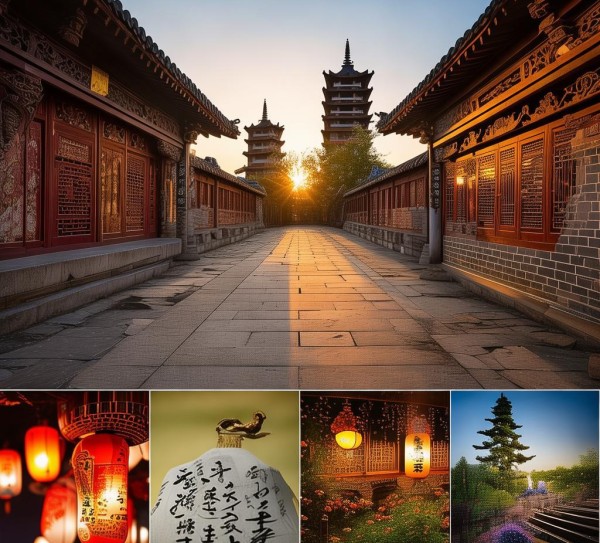This article delves into the rich cultural heritage of Nanjing, a city steeped in history and art. It explores the city's iconic landmarks, showcasing the blend of ancient traditions and modern development. The journey takes readers through the historical significance of Nanjing, its architectural marvels, and the vibrant cultural scene that continues to thrive.
Nanjing, the ancient capital of China, is a city steeped in history and culture. With a rich tapestry of historical sites, traditional architecture, and artistic treasures, Nanjing is a must-visit destination for anyone interested in immersing themselves in the cultural heritage of China. Let's embark on a journey to explore some of the most captivating cultural landmarks that Nanjing has to offer.

The Sun Yat-sen Mausoleum
One of the most iconic cultural landmarks in Nanjing is the Sun Yat-sen Mausoleum. This grand mausoleum, located on Zijin Mountain, is the final resting place of Dr. Sun Yat-sen, the founder of the Republic of China. The architecture of the mausoleum is a blend of traditional Chinese and modern styles, making it a stunning example of the fusion of past and present. The serene atmosphere and the panoramic views of the city from the top of the mountain offer a profound sense of respect and contemplation.
The Confucius Temple Area
The Confucius Temple Area, also known as the Qinhuai River Scenic Area, is a vibrant cultural hub that reflects the essence of Nanjing's history. This area is renowned for its ancient temples, traditional gardens, and bustling market streets. The Confucius Temple itself is dedicated to the great philosopher Confucius and is surrounded by numerous shops, teahouses, and restaurants. The annual Double Ninth Festival, when the temple is adorned with colorful lanterns, is a particularly vibrant time to visit.
The Ming Xiaoling Mausoleum
The Ming Xiaoling Mausoleum is one of the most famous and well-preserved imperial tombs in China. It is the resting place of the first Emperor of the Ming Dynasty, Zhu Yuanzhang. The mausoleum is characterized by its majestic architecture, beautiful gardens, and serene atmosphere. The stone lions, the archery tower, and the grand archway are just a few of the historical wonders that await visitors.
The Nanjing Massacre Memorial Hall
Nanjing is also home to the Nanjing Massacre Memorial Hall, a poignant reminder of the city's dark history during World War II. This museum and memorial hall document the tragic events of the Nanjing Massacre, where over 300,000 Chinese civilians and soldiers were killed by Japanese troops. The hall is a somber yet educational experience, serving as a testament to the resilience and strength of the human spirit.
The Xuanwu Lake Park
Xuanwu Lake Park is one of the largest urban parks in China and is a favorite among locals and tourists alike. The park is named after the Xuanwu Lake, which is one of the five largest freshwater lakes in China. The lake is surrounded by lush gardens, traditional pavilions, and historical sites, including the Xuanwu Temple. Visitors can enjoy boating on the lake, taking a leisurely stroll through the park, or simply appreciating the natural beauty of the area.
The Nanjing Museum
The Nanjing Museum is one of the most significant museums in China, housing an extensive collection of artifacts that span over 4,000 years of Chinese history. The museum is housed in the former presidential palace of the Republic of China and offers a comprehensive overview of the city's rich cultural heritage. From ancient bronze artifacts to exquisite silk paintings, the museum is a treasure trove for history enthusiasts.
The Nanjing Yangtze River Bridge
The Nanjing Yangtze River Bridge is not only an architectural marvel but also a symbol of China's modernization. Completed in 1968, the bridge spans the Yangtze River and connects the city of Nanjing to the rest of China. The bridge is a testament to the engineering prowess of the Chinese people and offers breathtaking views of the river and the city skyline.
In conclusion, Nanjing is a city that is rich in cultural landmarks, each telling a unique story of China's past. Whether you are interested in history, art, or simply want to experience the vibrant culture of this ancient capital, Nanjing has something to offer everyone. So, if you find yourself in this part of China, take the time to explore these cultural landmarks and immerse yourself in the timeless beauty of Nanjing.

